Abstract
Pectinolytic yeasts, Saccharomyces marxianus, S. bayanus, S. cerevisiae var. ellipsoideus, and Schizosaccharomyces sp., predominated in the natural fermentation of coffee cherries of Coffea robusta variety grown in Chikmagalur district of Mysore State, India. These yeast species were found on the cherry surfaces, and evidence was adduced to show that the natural fermentation of coffee was the result of activity of microflora from the cherry surface itself rather than that of flora of air or water. Incorporation of pure cultures of Saccharomyces species was shown to aid the process when a mixture of all three species was used. An enzyme preparation from the Saccharomyces species was observed to hasten the mucilage-layer degradation.
Full text
PDF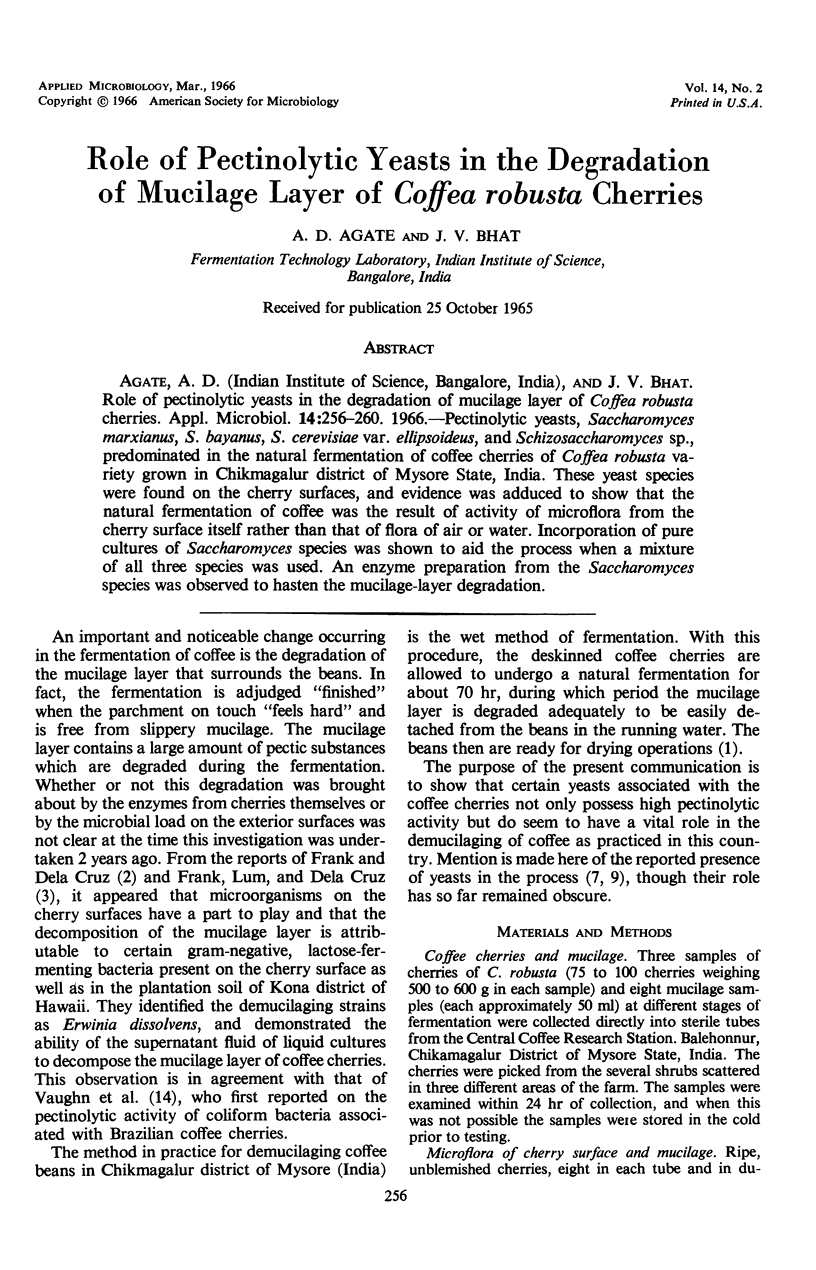
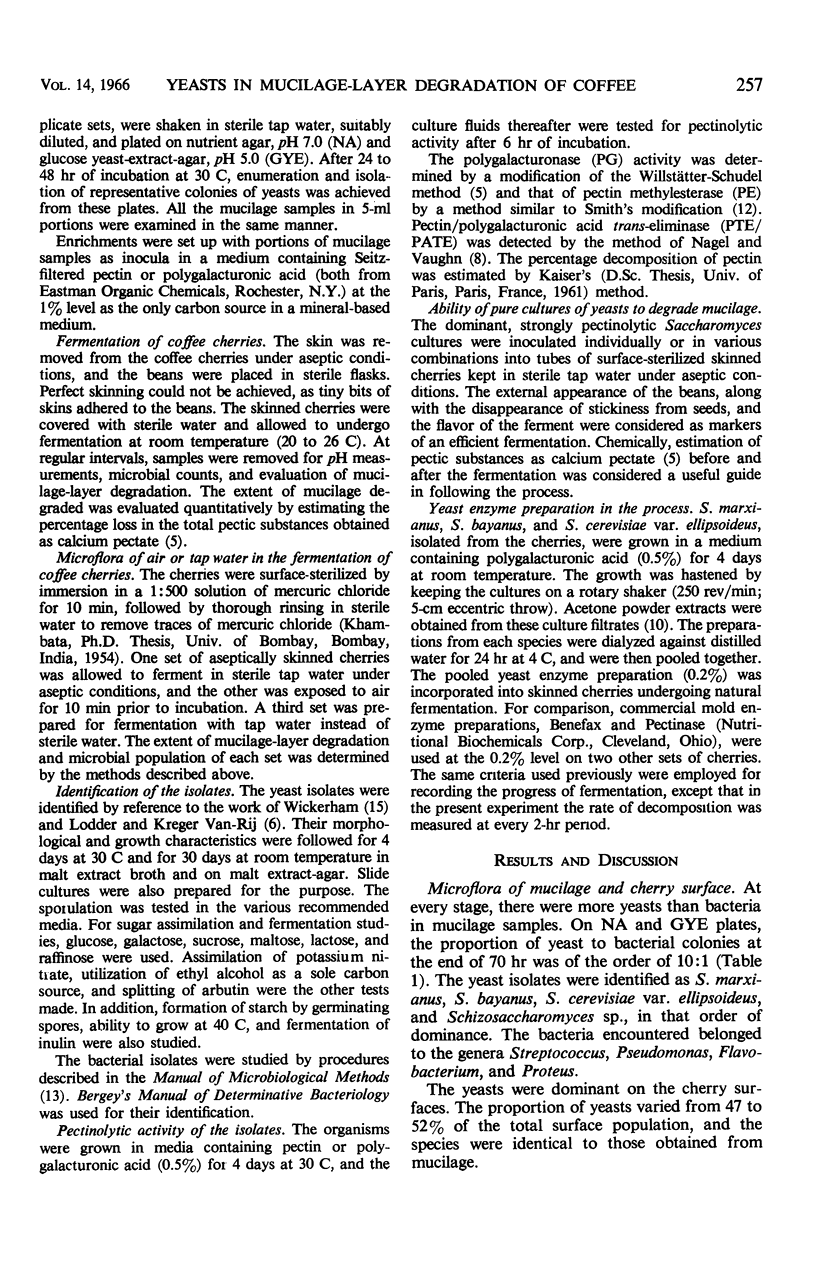
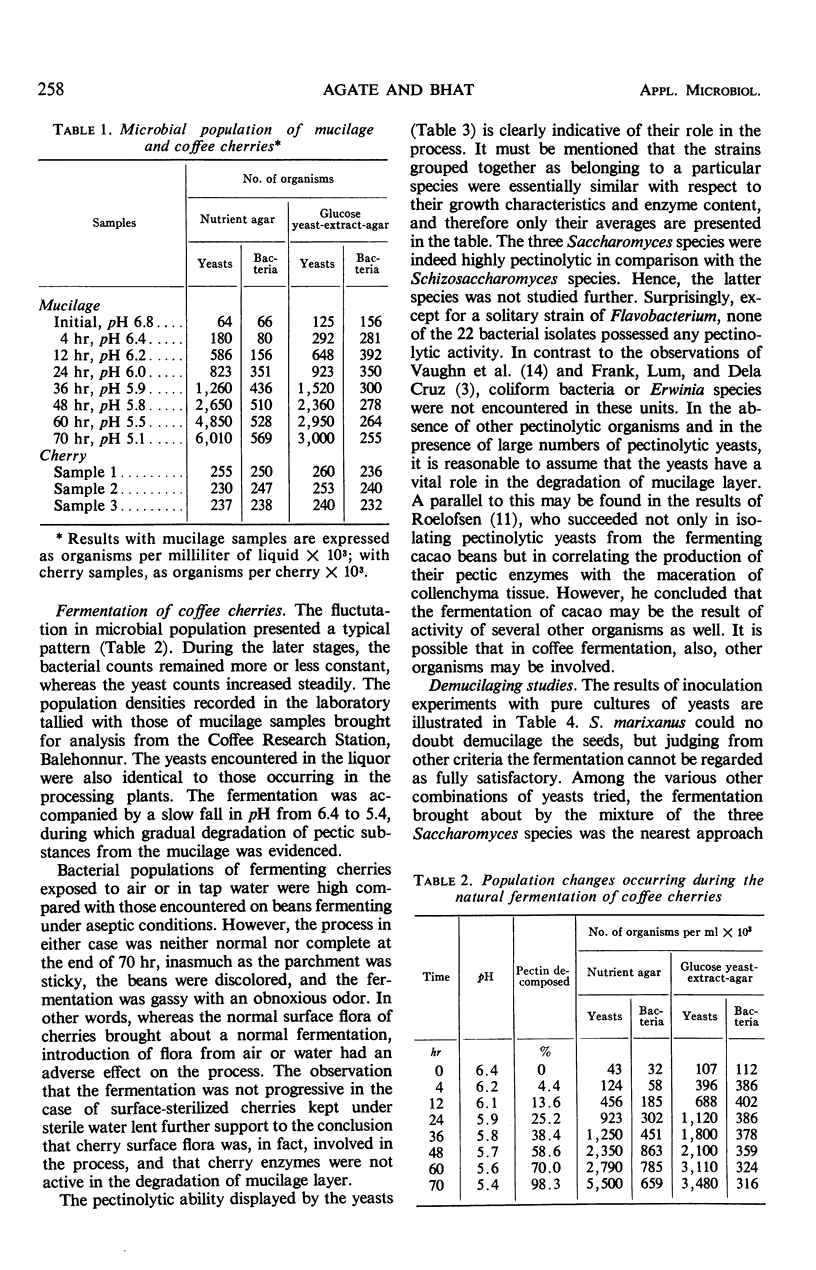
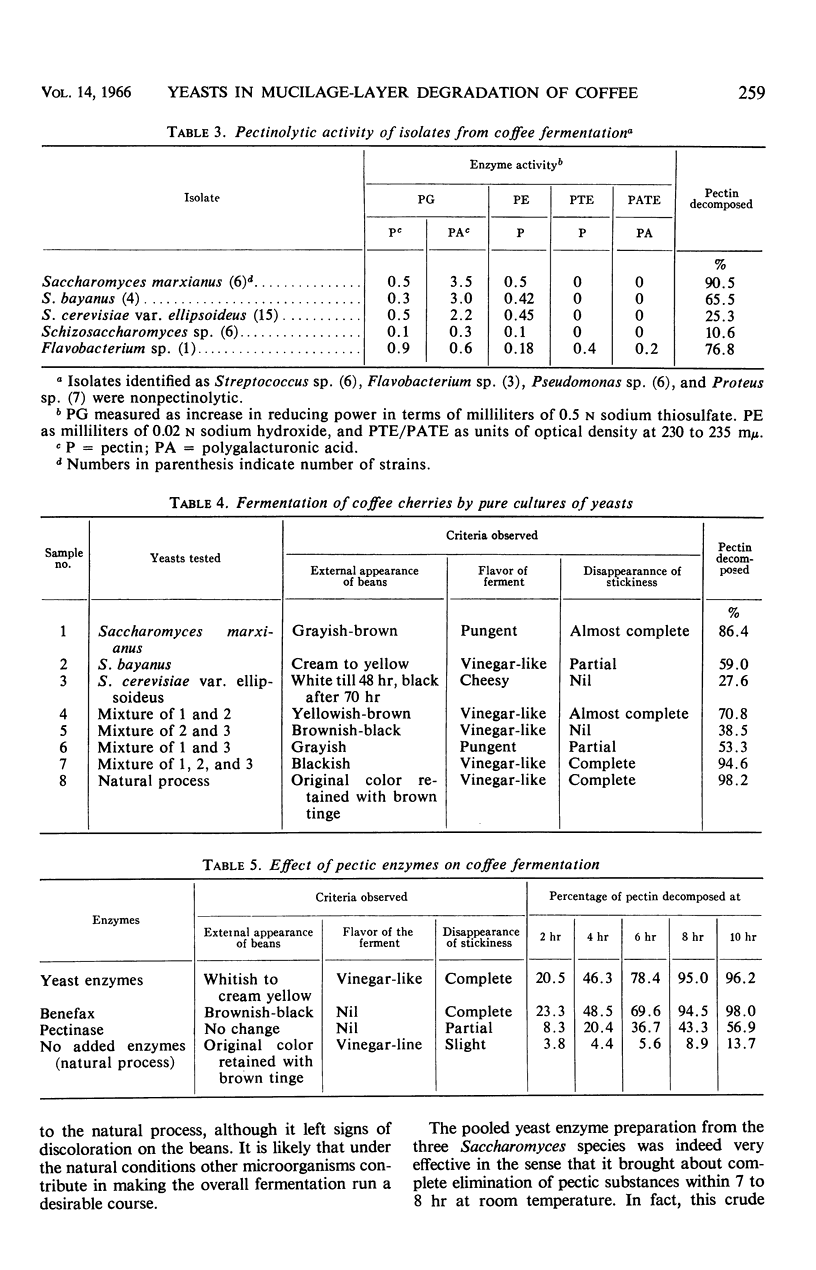
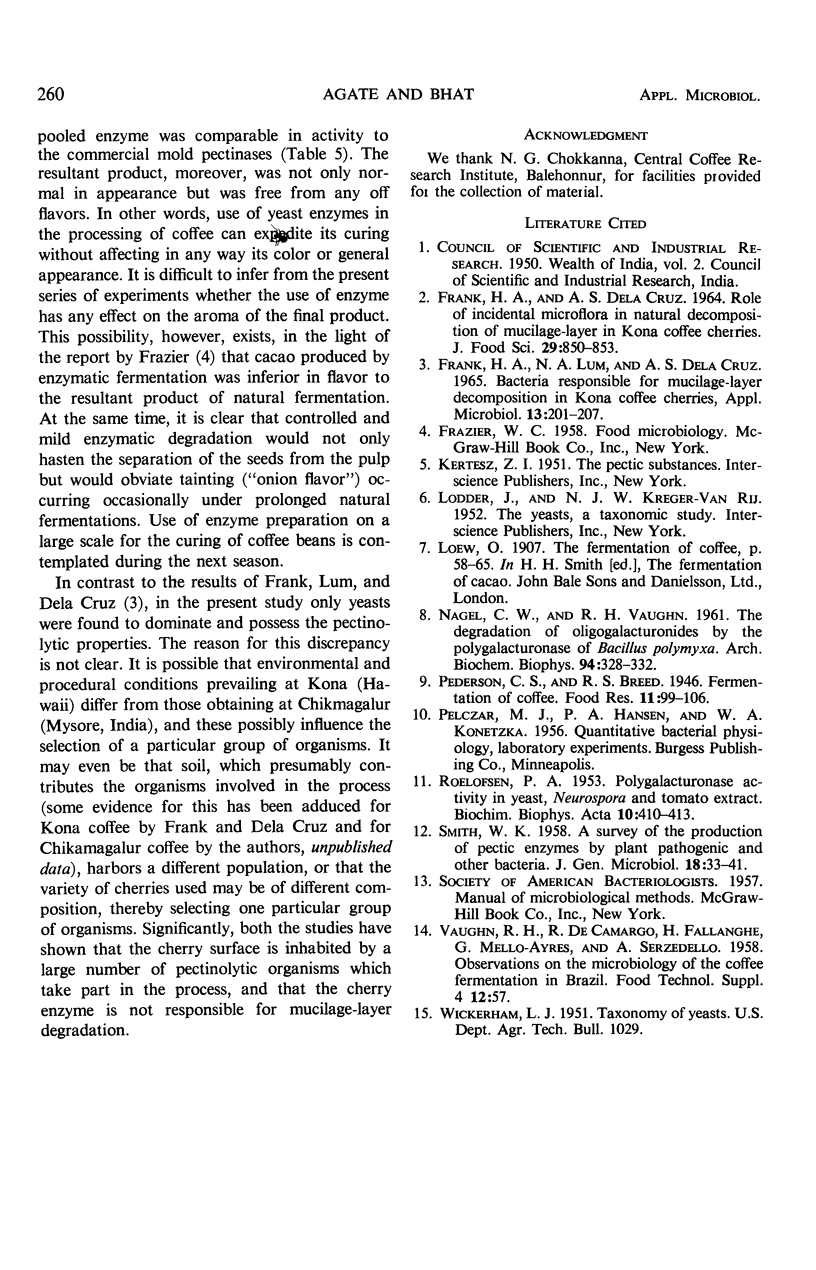
Selected References
These references are in PubMed. This may not be the complete list of references from this article.
- FRANK H. A., LUM N. A., DELACRUZ A. S. BACTERIA RESPONSIBLE FOR MUCILAGE-LAYER DECOMPOSITION IN KONA COFFEE CHERRIES. Appl Microbiol. 1965 Mar;13:201–207. doi: 10.1128/am.13.2.201-207.1965. [DOI] [PMC free article] [PubMed] [Google Scholar]
- NAGEL C. W., VAUGHN R. H. The degradation of oligogalacturonides by the polygalacturonase of Bacillus polymyxa. Arch Biochem Biophys. 1961 Aug;94:328–332. doi: 10.1016/0003-9861(61)90047-9. [DOI] [PubMed] [Google Scholar]
- ROELOFSEN P. A. Polygalacturonase activity in yeast, Neurospora and tomato extract. Biochim Biophys Acta. 1953 Mar;10(3):410–413. doi: 10.1016/0006-3002(53)90272-8. [DOI] [PubMed] [Google Scholar]
- SMITH W. K. A survey of the production of pectic enzymes by plant pathogenic and other bacteria. J Gen Microbiol. 1958 Feb;18(1):33–41. doi: 10.1099/00221287-18-1-33. [DOI] [PubMed] [Google Scholar]


